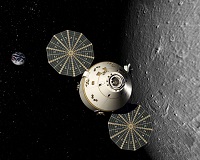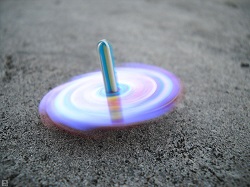Newton's First Law
Newton's first law states that: "A body at rest will remain at rest unless acted on by an unbalanced force. A body in motion continues in motion with the same speed and in the same direction unless acted upon by an unbalanced force."
This law, also sometimes called the "law of inertia", means that bodies maintain their current velocity unless a force is applied to change that velocity. If an object is at rest with zero velocity it will remain at rest until some force begins to change that velocity, and if an object is moving at a set speed and in a set direction it will remain at that same velocity until some force begins to change that velocity.

|

|
Net Forces:
It is important to note that the net force is what will cause a change in velocity. The net force is the sum of all forces acting on the body. For example, we can imagine gently pushing on the rock in the figure above and observing that the rock does not move. This is because we will have a friction force equal in magnitude and opposite in direction opposing our gentle pushing force. The sum of these two forces will be equal to zero, therefore the net force is zero and the change in velocity is zero.
Rotational Motion:

Newton's first law also applies to moments and rotational velocities. A body will maintain it's current rotational velocity until a net moment is exerted to change that rotational velocity. This can be seen in things like toy tops, flywheels, stationary bikes, and other objects that will continue spinning once started until brakes or friction stop them.